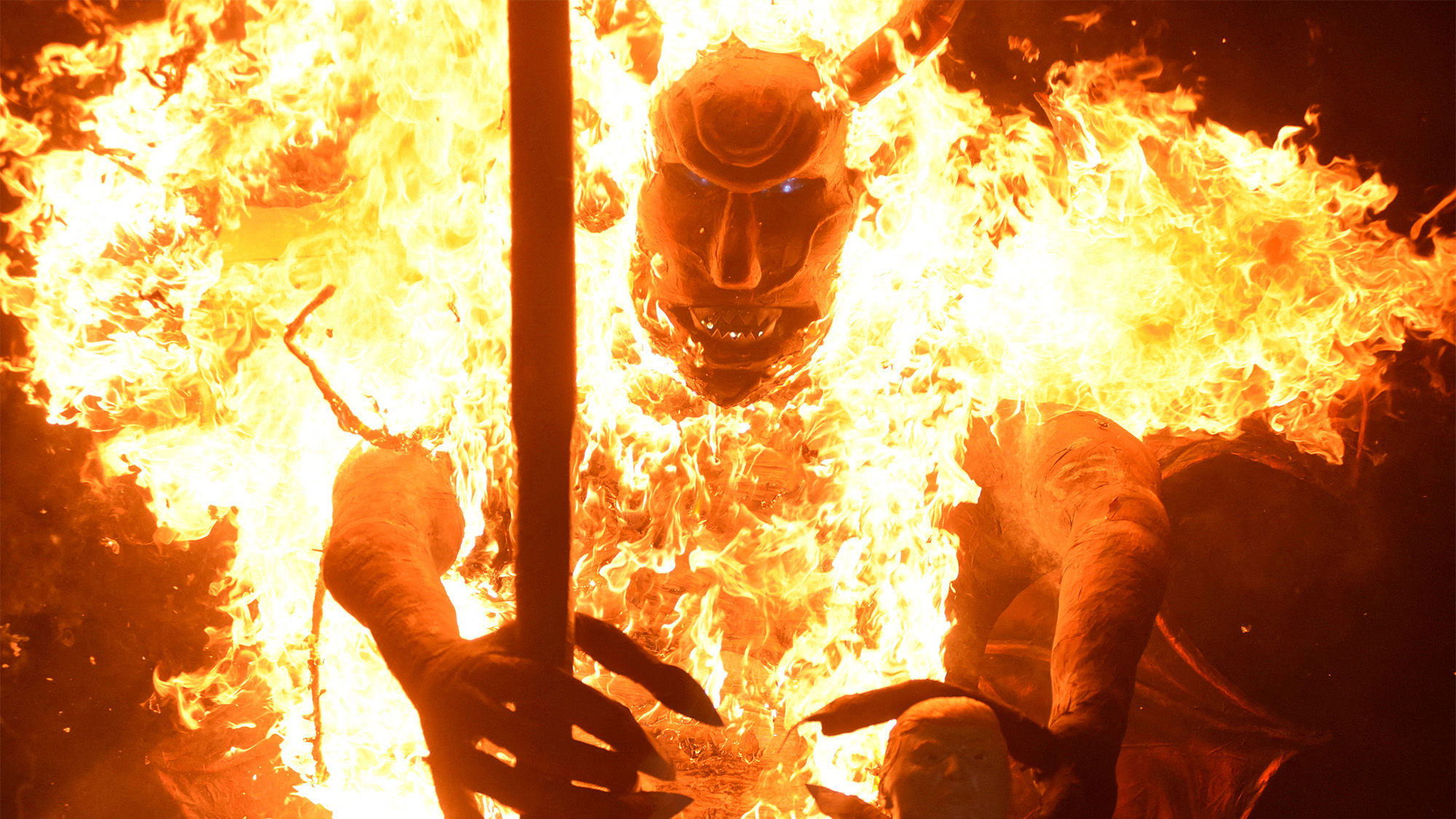Chechnya’s bloody struggle
The massacre of schoolchildren in the North Ossetian town of Beslan was the latest atrocity in the blood-soaked, centuries-old conflict between Russia and Chechnya. How did the Chechens and Russians come to despise each other?
What are the roots of the conflict?
The bloodshed goes back as far as 1722, when Muslim tribesmen began fighting troops sent by the czar. A Muslim cleric, Sheikh Mansur, declared holy war on the czar and his army, and the Chechens delivered the first of many shocking defeats to Russian forces in 1785. In the 1800s, Russia sought once and for all to conquer Chechnya and the entire wild mountain region known as the Caucasus, seeing it as a vital buffer zone to the turbulent Muslim nations of Central Asia and the Mideast. Most of the tribes in the region succumbed. But under the renowned leader Imam Shamyl, the Chechen fighters battled with astonishing ferocity and kept the czar at bay for 25 years, finally falling under his control in 1859. Even in defeat, the Chechens never accepted Russian rule. “No one spoke of hatred of the Russians,” wrote Leo Tolstoy, who served in Chechnya in the 1850s. “The feeling experienced by all Chechens, from youngest to oldest, was stronger than hate.”
When did the Chechens rebel again?
The Week
Escape your echo chamber. Get the facts behind the news, plus analysis from multiple perspectives.

Sign up for The Week's Free Newsletters
From our morning news briefing to a weekly Good News Newsletter, get the best of The Week delivered directly to your inbox.
From our morning news briefing to a weekly Good News Newsletter, get the best of The Week delivered directly to your inbox.
They bided their time until an opportunity presented itself, in the form of Russia’s Bolshevik Revolution in 1917. In the chaos, the Chechens tried to break away and form their own nation. It took more than a decade of fighting before the army of the Soviet Union brought Chechnya under tenuous control. During World War II, Joseph Stalin decided he would no longer tolerate the continued nationalistic aspirations of the Chechens, and deported the entire nation to Kazakhstan, ostensibly because they had collaborated with the Nazi invaders. The Chechens were systematically rounded up, herded onto freight trains, and sent off to settlements in the wild open spaces of Central Asia. Almost half of them perished, mainly from cold or hunger. Of all those enemies of the state jailed by Stalin, Aleksandr Solzhenitsyn later wrote in The Gulag Archipelago, the Chechen prisoners were the only ones “to refuse to accept the psychology of submission.” In 1957 Khrushchev allowed the survivors to return, though many went to Moscow. Today more than 100,000 Chechens live in the Russian capital and some 800,000 in Chechnya.
What happened when the Soviet Union collapsed?
Many of its republics sought and gained independence, including Georgia, Azerbaijan, and Armenia. Chechnya, too, declared its independence, but the Russians feared that all the tiny ethnic republics in the North Caucasus might follow suit. In 1994, president Boris Yeltsin sent 40,000 troops to subdue the Chechens.
Who prevailed?
A free daily email with the biggest news stories of the day – and the best features from TheWeek.com
Over the next two years, the Russians flattened the capital, Grozny, and killed tens of thousands of Chechens. But the Chechens fought with a bloody-mindedness that shocked the Russians, and inflicted large numbers of casualties. In 1995, a rebel leader named Shamil Basayev seized a hospital in Russia and took 1,500 people hostage. After a disastrous military assault, in which 129 hostages died, Moscow embarked on humiliating peace talks with the rebels, and agreed to let Basayev return safely to Chechnya. Soon after, a truce was agreed with Chechen military leader Aslan Maskhadov, leaving Chechnya de facto independent even if officially part of the Russian Federation.
Was independence a success?
It was a complete disaster. Chechnya descended into chaos as clans and warlords fought for power. Islamic fundamentalists made inroads in a region where most of the population had been Sufi, a moderate, mystical branch of Islam. In 1999, Basayev—having redefined himself as a jihadi—tried to whip up an Islamic rebellion in neighboring Dagestan, and in that same year, 300 people were killed in apartment-block bomb blasts in Russia that the Kremlin blamed on Chechen terrorists. Chechens also began siphoning off oil from a major Russian pipeline passing through Chechnya. At the end of 1999, the new man in the Kremlin, Vladimir Putin, launched the second Chechen war, sent in Russian troops, and declared direct rule over Chechnya.
What was Putin’s motive?
The Chechens are widely detested across Russia, and cracking down on their rebellion was highly popular with the Russian public. Putin, in fact, built his presidential campaign on it. But Russia has paid a terrible price for trying to keep the Chechens under its control. In the past two years, Chechen terrorists have massacred people in a Moscow theater, detonated suicide bombs in the Moscow subway, blown up two Russian airliners, and slaughtered more than 300 people in Beslan. Many outside observers believe that the resistance will continue; indeed, if Putin makes good on his promise to launch strikes against terrorist hideouts in Georgia and the Caucasus, Chechnya may be the spark that ignites a larger conflict. “We may get a big explosion throughout the south of Russia,” says Aleksei Malashenko of the Carnegie Moscow Center. “We are perhaps on the eve of a great war.”
The butcher of Beslan
The Decline of the West.
The Wall Street Journal.
-
 The week’s best photos
The week’s best photosIn Pictures A man's best friend, the elephants in the room, and more
-
 A TikTok trend has Gen Z men leaving streetwear behind for more preppy attire
A TikTok trend has Gen Z men leaving streetwear behind for more preppy attireThe Explainer More than a zipper: Young Black men embrace the ‘quarter-zip movement‘
-
 Codeword: December 12, 2025
Codeword: December 12, 2025The daily codeword puzzle from The Week